What a wonderful place to chill.
Gigi and I drove out to Swellendam (3 hours) on Saturday morning.

 Once one gets beyond the belt of pine plantations that fringe the Langeberg Mountains this is the view
Once one gets beyond the belt of pine plantations that fringe the Langeberg Mountains this is the viewThe temperature reached above 30degC on most days so the most attractive places to be were the patches of relic Afromontane Forest in the kloofs (ravines) where it was cool
Beautiful cool mountain streams run down all the kloofs
 Suikerbekkie (Sugar bird) Cottage where we stayed
Suikerbekkie (Sugar bird) Cottage where we stayed
As soon as we had unpacked we went exploring
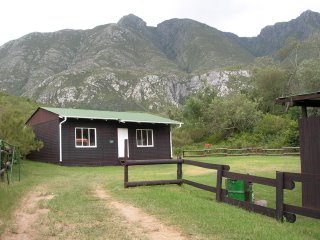 Glenstroom hut is close to Suikerbekkie Cottage where we stayed and is the first hut on the Swellendam Hiking Trail
Glenstroom hut is close to Suikerbekkie Cottage where we stayed and is the first hut on the Swellendam Hiking Trail
The cooking and 'dining' hut at Glenstroom
 Really!
Really!Cycle trail indicator lying in a local water canal
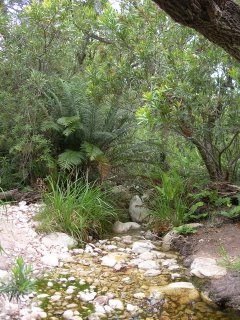
A typical local stream

Harveya stenosiphon

With magnificent red flowers
 The Langeberg Mountains
The Langeberg MountainsColoniesbos (left) and
Duiwelsbos (right)

The top of Coloniesbos (Colony's forest/wood) where Gigi and I walked on the first evening
The boys drove out to join us after they had finished work

Duiwelsbos (Devils forest/wood)
 Rothmannia capensis
Rothmannia capensisAccording to von Breitenbach, 'Southern Cape Forests and Trees', 1974, the name of the genus is in honour of a Swellendam farmer, Rothmann, host and helper of Carl Thunberg when the latter Swedish botanist explored the Doktersbos (so named after Thunberg who was originally a physician) and Grootvadersbosch in 1772 and discovered the tree there
We visited Doktorsbos the following day

Fruit of Rothmannia capensis

Leaves of Rothmannia capensis

Fruit and leaves of the the Red Candlewood tree, Pterocelastrus rostratus (I think)
The leaf shape is wrong for the more common Candlewood tree Pterocelastrus tricuspidatus

A typical Western Cape mountain stream

Leaves on the forest floor

A beautiful small pool

Gigi listening to bird calls


And there it is!
 The Hard Pear (Olinea ventosa) is the big tree, centre rear
The Hard Pear (Olinea ventosa) is the big tree, centre rearIt's wood was so hard that the early settlers could not cut it with hand saws, so many mature trees remain in our forests
Lying horisontally is a Blossom Tree (Virgilia oroboides), a 'pioneer species', that is common on forest margins, grows fast and is relatively shortlived
Virgilia provides shelter for the slower growing dominant trees to establish

Decending through Coloniesbos we came across this magnificent stand of tree ferns

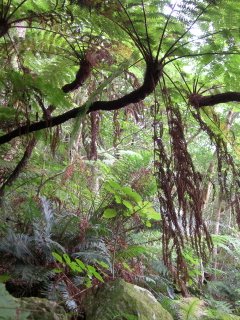




Leaving Coloniesbos

The boys arrived shortly after we got back to the cottage
Chris lighting a fire
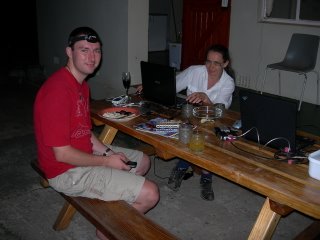
Nic and Gigi downloading images

Gigi - chilling

Chris contemplating
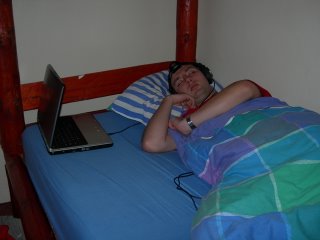
Nic off to bed - falls asleep listening to music

We slept late and went off to explore Duiwelsbos and find the waterfall in the afternoon

Many trees in Duiwelsbos grow in rings like this
This ring of trees must have copiced from one large old single stem that has since died and rotted away
Who knows how old the rootstock is, from which this ring of relative young trees copiced

A closer view showing how all the trees are joined at their base
Perhaps the original tree was burned down like the one in the picture further down this post

Gigi and Chris in Duiwelsbos

Red Pear, (Scolopia mundii)
A stunning turning wood
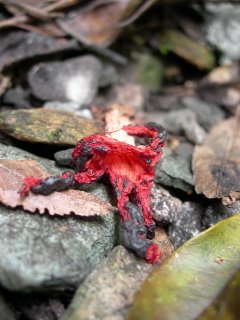
On the forest floor we found this interesting specimen ...
This is the fruiting body of a fungus called Aseroe rubra.
It's apparently fungus from Australia - another Australian invasive in South Africa - enough already!
The brown 'chocolate' is foul smelling spore slime that attracts insects who then crawl/fly off and spread the spores.
Better pictures of Aseroea rubra in Kirstenbosch on one of my previous posts

The further up the kloof one gets into the forest the more big trees there still occur, not having been felled by the early settlers
This is a wonderful Outeniqua Yellowwood tree (Podocarpus falcatus)

Here is a big hardpear tree, burned out from the centre
It seems that the big fynbos fires outside the forest shoot burning debris into the forest
This causes localised fires within the forest itself

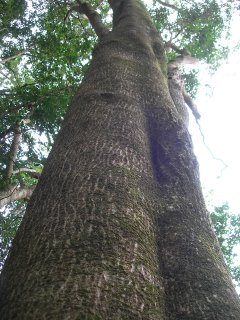
A huge Ironwood tree (Olea capensis)
A stunning, much sought after, turning wood

The waterfall at the top of Duiwelskloof
 Gigi checking out the waterfall
Gigi checking out the waterfall
Chris

Cape Holley tree (Ilex mitis)
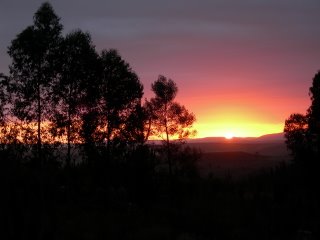
Sunset from Suikerbekkie cottage
Pitty about the invasive eucalyptus trees!

Christmas dinner is taken on Christmas eve in the German tradition

The boys thank Esprit very much for the two Ipods

Next morning, Christmas day, we took a walk up to Doktorsbos (so named after Carl Thunberg who was originally a physician)
 Nearby some idiot forester planted an extension to the local plantation high up on a ridiculously steep slope surrounded on three sides by Fynbos
Nearby some idiot forester planted an extension to the local plantation high up on a ridiculously steep slope surrounded on three sides by FynbosNow knowing that Fynbos communities are fire driven ecosystems, guess what ...
 The lower slopes of the mountains are dominated by invasive alien vegetation, pines, eucalypts, black wattle and blackwood among others
The lower slopes of the mountains are dominated by invasive alien vegetation, pines, eucalypts, black wattle and blackwood among othersThe temperature was over 30degC

So we stopped at a small stream
This was the most co-operative frog imaginable
He loved having his photograph taken

Red current tree (Rhus chirindensis)
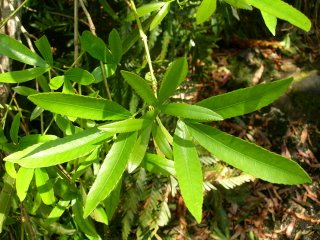
Red current tree (Rhus chirindensis)
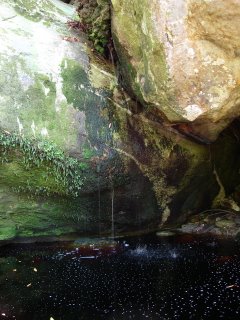
A pool in the stream

Foresters also have the habit of planting belts of Eucalyptus trees as fire belts between blocks of pines
Eucalypts just dry out and 'kill' the soil where they grow
Nic, our family geologist, pointed out to me when we were traveling in Namibia how the wind blows away the dry soil leaving a layer of rocks on the surface

Look at how dry that soil is
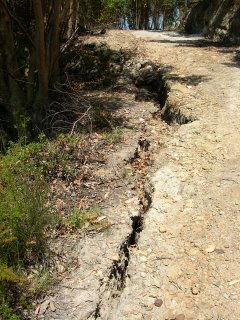
The soil drying out is causing the forest road to crack and slide downhill
If this is not repaired soon guess who is not going to get their vehicles to where they need to figh the next fire
 Panorama to the south
Panorama to the south The Langeberg to the north
The Langeberg to the northSee the burned plantation on the very steep slope

Another big errosion gully essentially caused by all those soil dessicating alien trees

The reserve buildings

'Nice' big swathe of invasive kikuyu grass growing where buildings previously stood

And on the way past those buildings we come across flowers of a passion fruit or Granidella (Passiflora edulis)

And its fruit

The next day the boys left early to get to work in Cape Town and we followed a more leasurely pace to join a family gathering in Stellenbosch

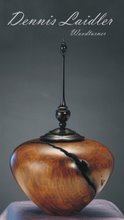
2 comments:
Looks like a nice Christmas holiday! Thanks for posting it. BTW - the Harveya is H. stenosiphon. I collected one somewhere in that area several years ago.
Yeh - we had a good break. Thanks Andi for the id on the Harveya.
Post a Comment